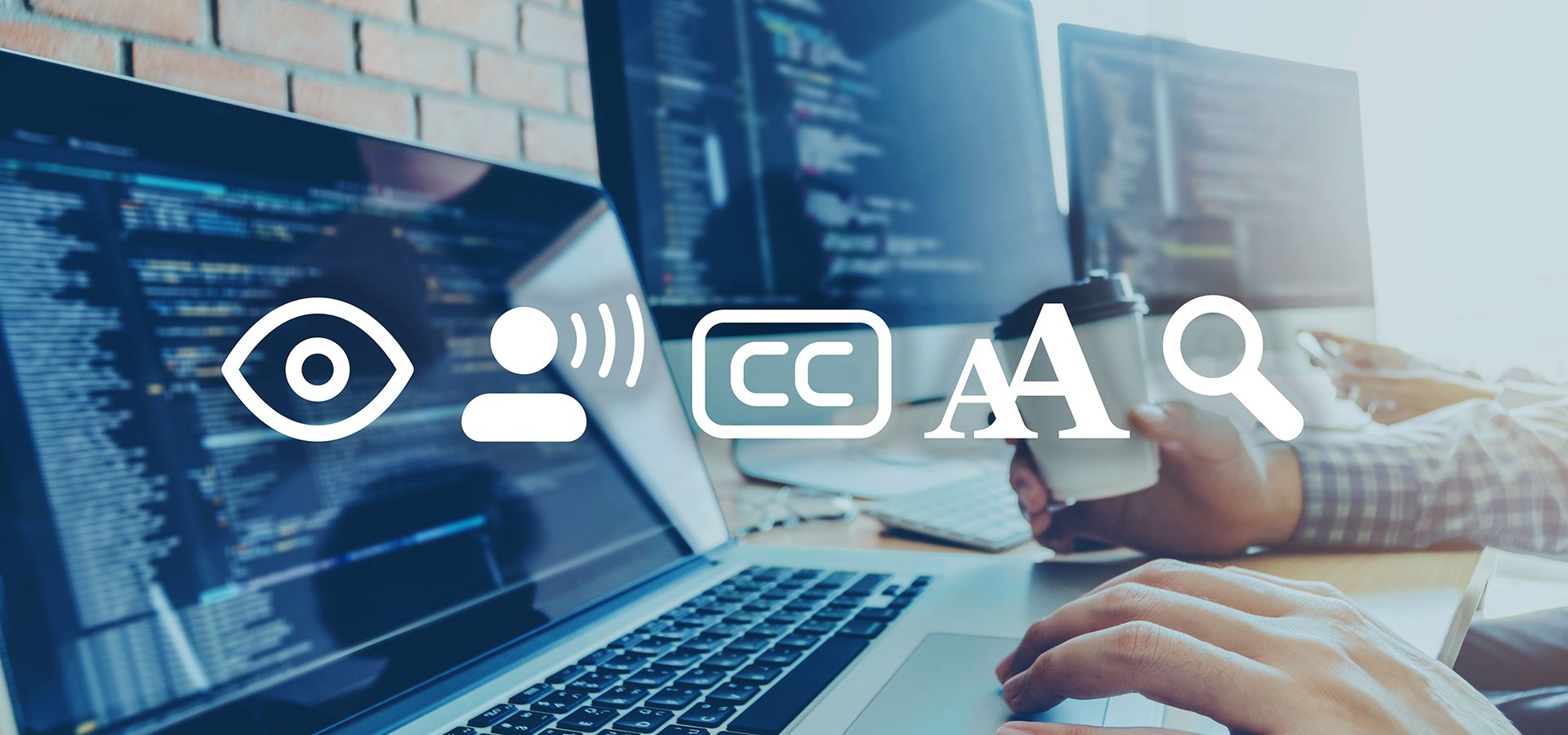Making the Web Accessible and Enjoyable for Everyone


Access to the Web has become more readily available than ever before. It affects and facilitates nearly every aspect of modern life, involving many fields, from education and healthcare to business and government.
The Web, at its core, is designed to work for everyone, no matter their hardware, software, language, location, or ability. When the Web meets this goal, it is accessible to people with a diverse range of abilities — be it hearing, movement, sight, or cognitive ability. The Web has radically changed the impact of many disabilities, because it removes barriers to communication and interaction that many people face in the physical world. However, when websites are poorly built, they can create barriers that exclude people from using the Web.
What does it mean to be accessible on the Web?
Before we start building accessible websites, we need to know what “accessible” really means on the Web. Luckily for us, the World Wide Web Consortium (W3C) wrote some very specific guidelines just for that. These guidelines are based on four main principles. Accessible websites should be:
- Perceivable - Available to the senses (primarily vision and hearing) either through the browser or through assistive technologies (screen readers, screen enlargers).
- Operable - Users can interact with all controls and interactive elements using either the mouse, keyboard, or an assistive device.
- Understandable - Content is clear and limits confusion and ambiguity.
- Robust - A wide range of technologies can access the content (including old and new devices and assistive technologies).
Why do we need accessibility and usability?
The Web is an increasingly important resource in our lives. It is vital that the Web be accessible to everyone in order to provide equal access and opportunity for everyone. Accessible websites can help people with disabilities participate more actively in society. It is also one of the easiest ways to do business with people with disabilities — for example, people who cannot read print material, or people who have difficulty going to a physical store. Furthermore, what we need to do to improve accessibility usually overlaps with other best practices such as mobile design, usability, and search engine optimization (SEO).
According to the World Bank, roughly 15% of the world’s population experience some form of disability. Though not all of these disabilities make it difficult for individuals to access the Internet, it is still a significant portion of the population. It would be unwise for us to purposefully exclude 15, 10, or even 5 percent of our potential visitors to our websites.
In making sure that our websites are accessible for everyone, we must first get acquainted with the different types of disabilities that may affect a user’s experience on the Web. The major categories of disability types are:
- Visual - Blindness, low vision, color-blindness.
- Hearing - Deafness and hard-of-hearing.
- Motor - Inability to use a mouse, slow response time, limited fine motor control.
- Cognitive - Learning disabilities, distractibility, inability to remember or focus on large amounts of information.
Web accessibility is the design and implementation on websites that overcome all of the difficulties that come with these types of disabilities. Web accessibility also benefits people without disabilities, for example:
- Atypical devices - mobile phones, smart watches, smart TVs, and other devices with small or irregularly shaped screens, different input modes, etc.
- Temporary disabilities - such as a broken arm or lost glasses.
- Situational limitations - such as in bright sunlight or in an environment where they cannot listen to audio.
- Limited internet access - slow Internet connection, or have limited or expensive bandwidth.
- Aging population - older people with changing abilities due to ageing.
Aside from being part of an organization’s corporate social responsibility, maintaining Web accessibility might also be required by law. If you live in the United States for instance, applicable laws include The Americans with Disabilities Act (ADA) and the Rehabilitation Act of 1973. Many international laws also address accessibility, so it would make perfect sense for businesses to comply with the Web accessibility guidelines set by the W3C.
How can we ensure the websites we develop are accessible?
Making the Web accessible does not just depend on the developers building the website. As standards change, ensuring accessibility and usability now becomes a continuous process in a website’s lifespan. Developers need to work together with designers and content producers in each step of the development process to ensure that websites adhere to accessibility guidelines. Consistent evaluation throughout the development process can make implementation much easier.
There’s too much that goes into Web accessibility to cover in just one blog post, but there are several extremely important areas that web designers can address in order to meet levels of compliance from Level A (the lowest) to Level AAA (the highest). Here are some of them:
- Including alternative (alt) text to describe non-textual content, such as images and PDFs.
- Structuring documents for easy navigation by both keyboard and mouse.
- Using default HTML tags and semantic markup to identify different content elements (buttons for buttons and not anchors, h1-h6 for headings).
- Using the proper markup for tables so that screen readers can understand them.
- Making it easy to fill out forms by including the correct labels, fieldsets and legends.
- Using links that make sense and are descriptive (in other words, avoiding “click here”).
- Structuring pages so users can easily navigate the screen and avoid certain elements as needed.
- Making sure that the page design does not rely on color for meaning, and considering color contrasts for visually impaired web users.
- Using easily readable fonts and appropriate heading styles.
- Using closed captioning for audio/video content.
- Removing restrictive features such as CAPTCHAs (or provide alternatives).
Finally, developers have a large array of Web accessibility evaluation tools to help them along the way. Here are some of them:
- A11Y Compliance Platform by Bureau of Internet Accessibility.
- Accessibility Developer Tools by Google Accessibility.
- Colorblindly Chrome Extension (As mentioned in Brit’s previous blog post).
- List of Web Accessibility Tools by the W3C.
Though these tools work well for development, seeking the feedback of those who need websites to be accessible will give us a better view of the aspects of our website that need adaptation. People with disabilities sometimes use web assistive technologies to help them, so learning about these tools could also be beneficial.
The web offers many opportunities that are unavailable through any other medium. It offers independence and freedom. However, if a website is not created with web accessibility in mind, it may exclude a segment of the population that stands to gain the most from the Internet. As organizations and designers become aware of and implement accessibility, they will ensure that their content can be accessible to everyone.
-
Contact Us
-
 Zubair Ab AzizFull-Stack DeveloperZubair is a full-stack developer, obsessed with learning and applying all of the tips & tricks of this rapidly evolving field. When he’s not busy coding, Zubair can be found listening to his favorite podcasts with a cup of coffee in hand, or out on nature trails with his camera.
Zubair Ab AzizFull-Stack DeveloperZubair is a full-stack developer, obsessed with learning and applying all of the tips & tricks of this rapidly evolving field. When he’s not busy coding, Zubair can be found listening to his favorite podcasts with a cup of coffee in hand, or out on nature trails with his camera.